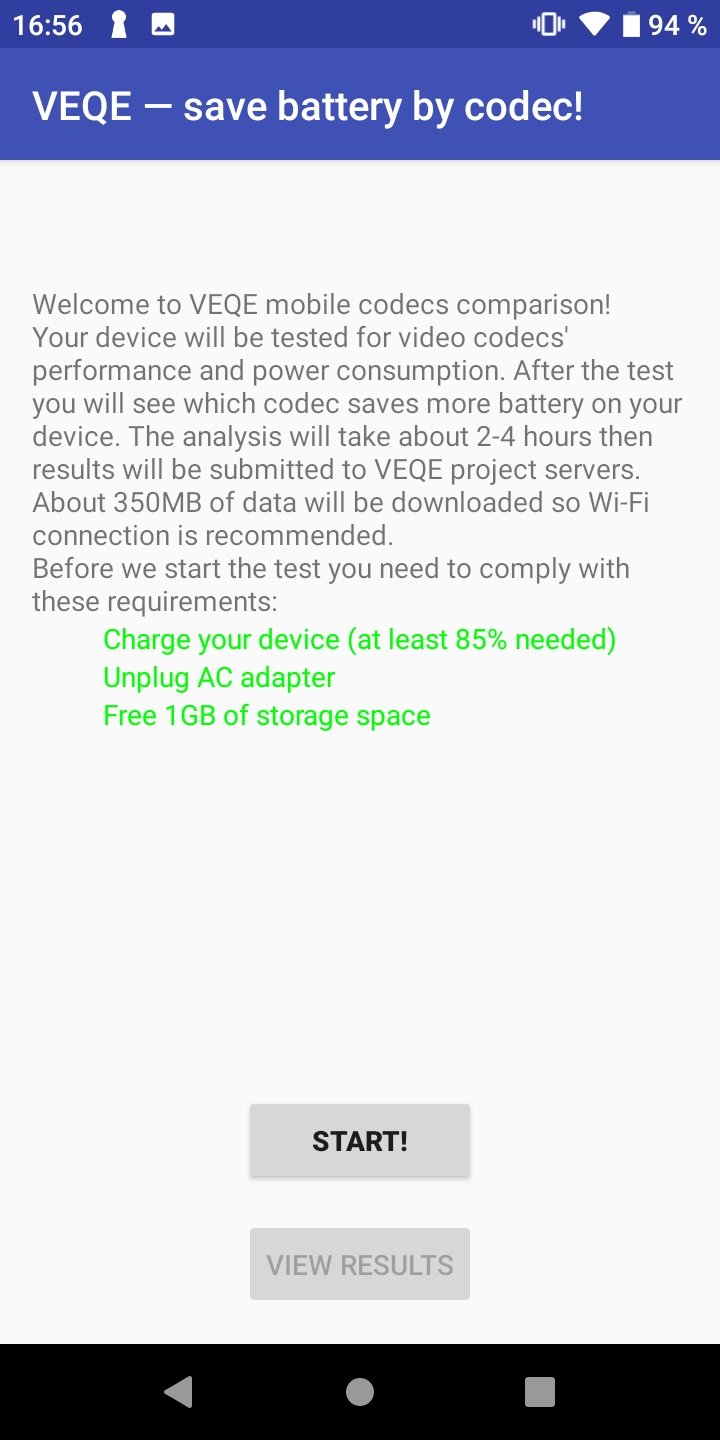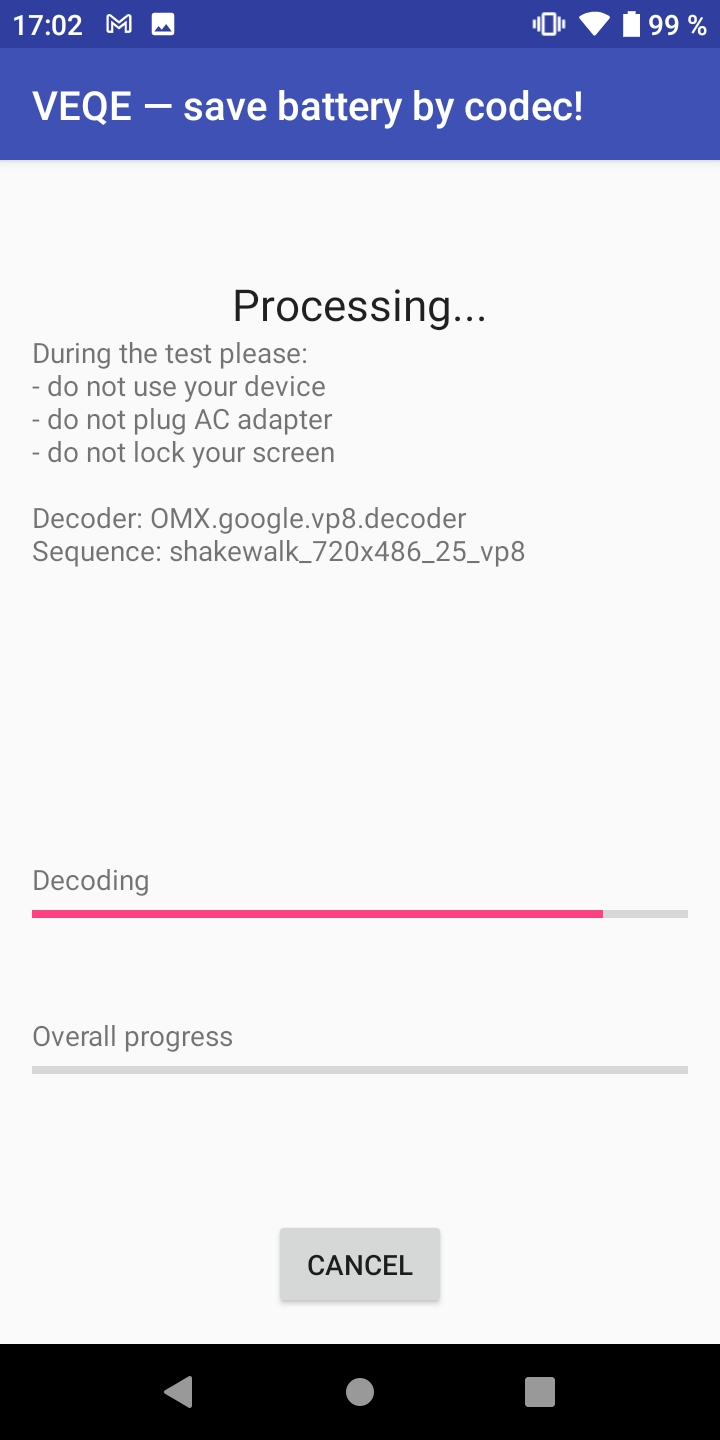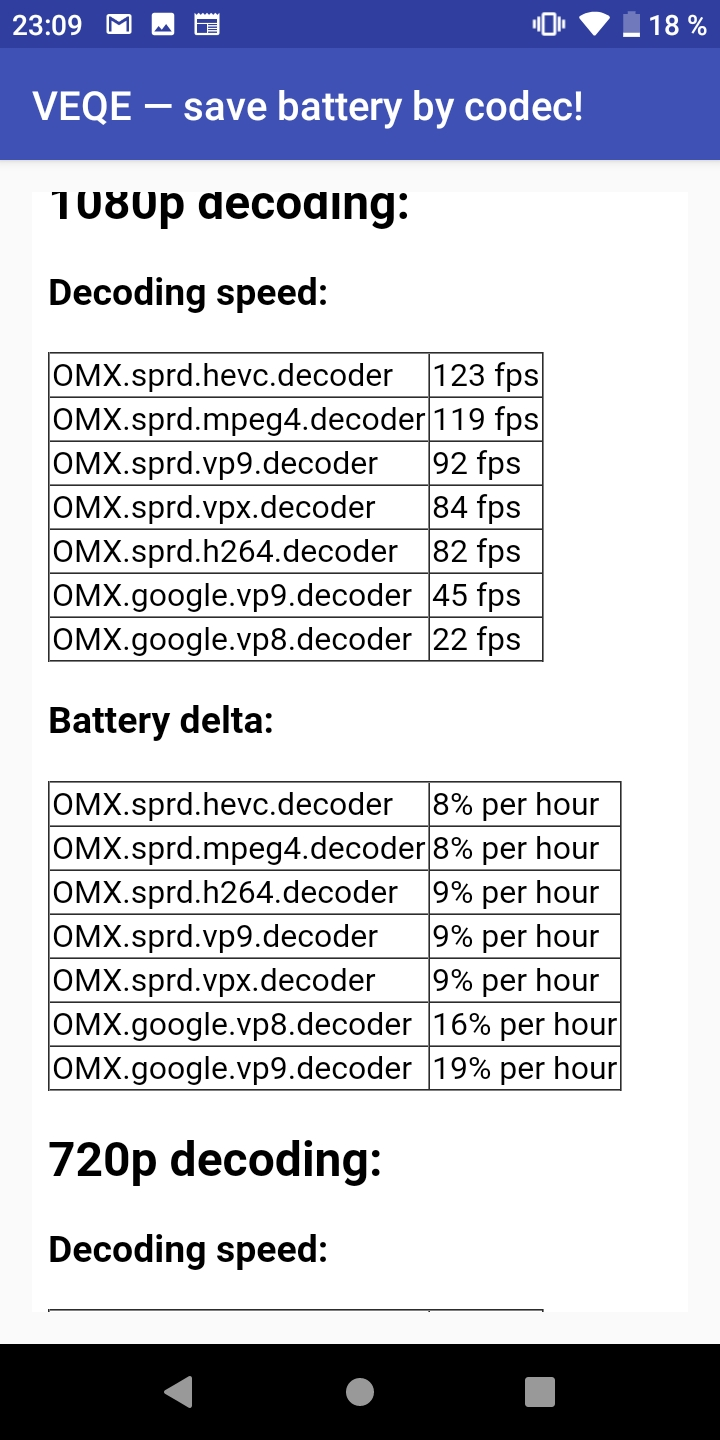MSU Mobile Video Codecs Benchmark
Find the most power-efficient video-decoder on your Android device

Smart video-decoder selection to increase video playback duration on Xiaomi Mi A2 Lite and LG X Power smartphones.
See methodology for more information.
What’s New
- October 1, 2021 Beta-version Release
Key Features of the Benchmark
- Speed and power efficiency measurement. The benchmark estimates key indicators (power efficiency and speed) to find the best mobile video-decoder on a given Android device
- Video playback time increase by up to 22 hours. Use of video-decoder we recommend prolongs offline video playback duration by up to 22 hours
- 147 Android models, 6 compression standards. The benchmark ranking supports the biggest number of Android devices and contains 147 models, six compression standards (MPEG-4, H.264, VP8, VP9, HEVC, and AV1), and three resolutions (SD, HD, and Full HD)
Mobile Video-Decoder Ranking
See the full ranking for SD resolution that contains 147 device models.
See the full ranking for HD resolution that contains 147 device models.
See the full ranking for Full HD resolution that contains 147 device models.
How to Benchmark New Device
The basic rules to the benchmarking:
- In order to get the benchmarking started, the device must have battery charge between 85% and 95%
- The device must not be used during the benchmarking so it is recommended to run the test at night time during sleep



Perform the following steps to benchmark:
- Install the benchmark.
- Charge the device battery from 85% up to 95% and launch the application.
- If the first testing cycle, click the button START, type your nickname and click a button NEXT to start the testing. Otherwise, click a button CONTINUE.
- Do not use the device while the test is running. The test will take about 6–8 hours. Once the testing is complete the application displays a table with the current results.
- Go back to the main menu. If the main menu contains a button CONTINUE, the testing is not complete for all video-decoders and you need to proceed to step 2 for the next testing cycle. Otherwise, the testing is complete and you can click VIEW RESULTS to see the whole results.
Also, you can download the benchmark via this QR code:

Cite Us
To refer to our benchmark in your work, cite our paper:
|
@INPROCEEDINGS{
author={Kazantsev, Roman and Yanushkovsky, Vladimir and Vatolin, Dmitriy},
booktitle={2021 Data Compression Conference (DCC)},
title={Video-Decoder Power Consumption on Android Devices: Power-Estimation Method, Dataset Creation, and Analysis Results},
year={2021},
pages={347-347},
doi={10.1109/DCC50243.2021.00084}
}
|
Contact Us
For questions and proposals, please contact us: mvc-benchmark@videoprocessing.ai
MSU Video Quality Measurement Tool
Widest Range of Metrics & Formats
- Modern & Classical Metrics SSIM, MS-SSIM, PSNR, VMAF and 10+ more
- Non-reference analysis & video characteristics
Blurring, Blocking, Noise, Scene change detection, NIQE and more
Fastest Video Quality Measurement
- GPU support
Up to 11.7x faster calculation of metrics with GPU - Real-time measure
- Unlimited file size
Main MSU VQMT page on compression.ru
See Also
PSNR and SSIM: application areas and criticism
Learn about limits and applicability of the most popular metrics
Video Colorization Benchmark
Explore the best video colorization algorithms
Video Saliency Prediction Benchmark
Explore the best video saliency prediction (VSP) algorithms
LEHA-CVQAD Video Quality Metrics Benchmark
Explore newest Full- and No-Reference Video Quality Metrics and find the most appropriate for you.
Learning-Based Image Compression Benchmark
The First extensive comparison of Learned Image Compression algorithms
Super-Resolution for Video Compression Benchmark
Learn about the best SR methods for compressed videos and choose the best model to use with your codec
Site structure
-
MSU Benchmark Collection
- Video Colorization Benchmark
- Video Saliency Prediction Benchmark
- LEHA-CVQAD Video Quality Metrics Benchmark
- Learning-Based Image Compression Benchmark
- Super-Resolution for Video Compression Benchmark
- Defenses for Image Quality Metrics Benchmark
- Super-Resolution Quality Metrics Benchmark
- Deinterlacer Benchmark
- Metrics Robustness Benchmark
- Video Upscalers Benchmark
- Video Deblurring Benchmark
- Video Frame Interpolation Benchmark
- HDR Video Reconstruction Benchmark
- No-Reference Video Quality Metrics Benchmark
- Full-Reference Video Quality Metrics Benchmark
- Video Alignment and Retrieval Benchmark
- Mobile Video Codecs Benchmark
- Video Super-Resolution Benchmark
- Shot Boundary Detection Benchmark
- The VideoMatting Project
- Video Completion
- Codecs Comparisons & Optimization
- VQMT
- MSU Datasets Collection
- Metrics Research
- Video Quality Measurement Tool 3D
- Video Filters
- Other Projects

